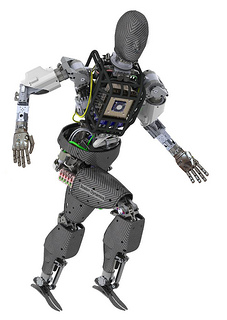C-3PO is a protocol droid designed to serve humans, but it wouldn't be able to save them if they got caught under rubble in an earthquake. Wall-E, a waste-collecting robot, would also find it tough going should disaster strike and trap people.
But if you head south to Ben-Gurion University of the Negev, you’ll come across plans for the superhero of robots – one that could rescue people in disaster zones.
Prof. Hugo Guterman of BGU’s Department of Electrical and Computer Engineering is leading a team from the Israeli robotics industry (Israel Aerospace Industries and Cogniteam) and academia (BGU, Bar-Ilan University, Technion-Israel Institute of Technology) to compete in the much-hyped Defense Advanced Research Projects Agency (DARPA) Robotics Challenge.
Their mission: To develop robotic technology for search-and-rescue operations. The prize: $2 million.
US-based DARPA came up with the Robotics Challenge in answer to such calamities as the Fukushima Daiichi nuclear catastrophe, the Deepwater Horizon oil spill and the Chilean Copiapó mine collapse.
"Our best robotic tools are helping, but they are not yet robust enough to function in all environments and perform the basic tasks needed to mitigate a crisis situation," reads the website. “The DARPA Robotics Challenge program will help meet these needs directly by developing robotic technology for disaster response operations.”
The multi-tiered contest has events scheduled for June and December 2013 and December 2014.
"Israel's participation in this contest is a major recognition of our capabilities," team leader Guterman says. "Israel is a very special country because we have a lot of initiatives here. DARPA made the challenge at a very high level to push the engineers into making great technology."
The sole Israeli contender
The DARPA Robotics Challenge is open to everyone, but DARPA is funding only 18 teams -- seven developing both hardware and software, and eleven (including Israel's delegation, Robil) developing software only.
Robil is the only foreign team in the funded track of the challenge, competing against such formidable contenders as MIT and NASA’s Jet Propulsion Laboratory.
Using its $375,000 DARPA budget, Robil will develop software for a modified version of the Boston Dynamics-designed Atlas robot. The team will present its product in a cloud-based, open-source, real-time, operator-interactive simulator that Gill Pratt, program manager for the competition, predicted to be “one of DARPA’s legacies to the robotics community.”
Pratt said the Challenge aims to “catalyze robotics development across all fields so that we as a community end up with more capable, more affordable robots that are easier to operate.”
“The value of a cloud-based simulator is that it gives talent from any location a common space to train, design, test and collaborate on ideas without the need for expensive hardware and prototyping. That opens the door to innovation.”
An international mission
If DARPA has its way, natural disasters in the future will be more easily and safely addressed through the use of sophisticated robots using standard tools and equipment commonly available in human environments, ranging from hand tools to vehicles.
In the final challenge, the robots will have to drive a utility vehicle, travel on rough terrain, remove debris, open a door and enter a building, climb a ladder or stairs, use a tool to break through concrete, locate and close a valve and replace a component.
"The robot must be autonomous," Guterman says. "It must be an intelligent robot. The people are not controlling what he's doing but rather telling him what he needs to do, and then he does it."

The winning robot must be able to function independently
DARPA, touted as the most important challenge for robotics experts, is all about innovation, originality and mathematical equations.
“Just as natural and man-made disasters are common worldwide challenges,” said Pratt, “the international robotics community shares a common goal of advancing robotic technology to the point where it can have a tangible and positive impact on humanitarian assistance and disaster relief.”